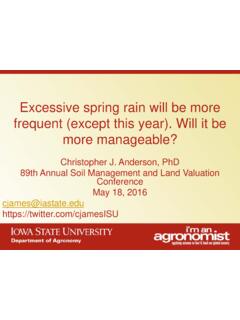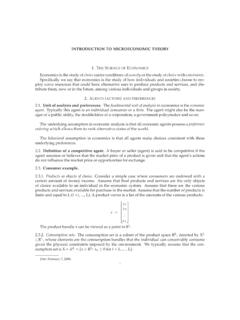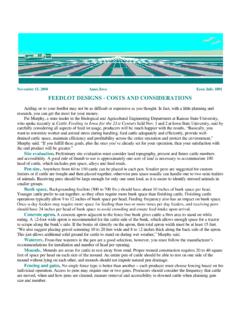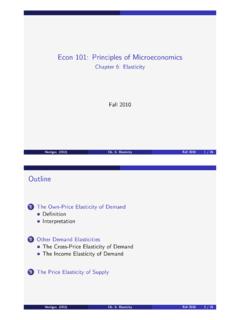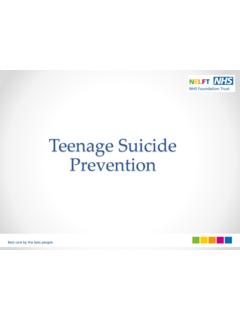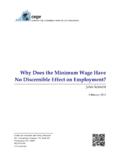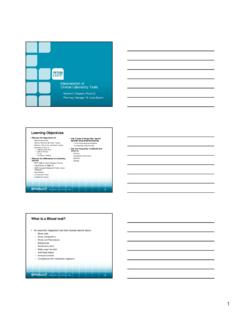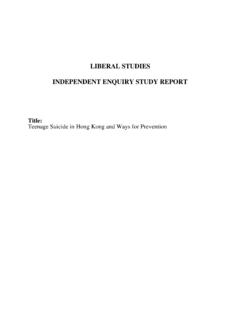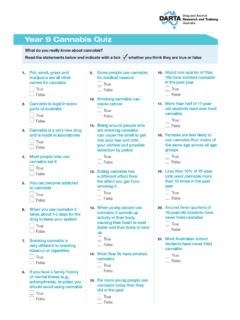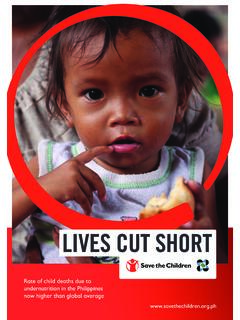Transcription of Assessing the Use of Agent-Based Models for …
1 Visit the National Academies Press online and register access to free PDF downloads of titles from theDistribution, posting, or copying of this PDF is strictly prohibited without written permission of the National Academies Press. Unless otherwise indicated, all materials in this PDF are copyrighted by the National Academy of Sciences. Request reprint permission for this bookCopyright National Academy of Sciences. All rights off print titlesCustom notification of new releases in your field of interestSpecial offers and discountsNATIONAL ACADEMY OF SCIENCESNATIONAL ACADEMY OF ENGINEERINGINSTITUTE OF MEDICINENATIONAL RESEARCH COUNCILThis PDF is available from The National Academies Press at pages6 x 9 PAPERBACK (2015) Assessing the Use of Agent-Based Models for tobacco Regulation Robert Wallace, Amy Geller, V. Ayano Ogawa, Editors; Committee on the Assessment of Agent-Based Models to Inform tobacco Product Regulation; Board on Population Health and Public Health Practice; Institute of Medicine Copyright National Academy of Sciences.
2 All rights the Use of Agent-Based Models for tobacco Regulation Although policy makers have long looked to behavioral Models to guide their decision making, there is no accepted set of recommendations or best practices for how to manage this process. In accordance with its statement of task, the committee reviewed the uses of Agent-Based mod-eling (ABM) in policy decision making and how this method fits into a broader methodological toolkit. The goal of this chapter is to provide guid-ance on (1) understanding the conditions under which Models specifically individual-level Models are appropriate and useful in aiding policy deci-sions; (2) elucidating the empirical and theoretical challenges of specifying model inputs and interpreting model outputs appropriately; and (3) provid-ing guidance for navigating key modeling decisions, including deter mining the appropriate levels of verisimilitude and aggregation, dealing with issues of model specification and evaluation, and quantifying uncertainty.
3 Fortu-nately for tobacco control policy modelers, many regulatory authorities and academic fields are struggling with related problems in terms of model specification and inference. Their efforts offer a wealth of examples and experiences to draw from. The organization of this chapter is as follows. The motivation for Models in policy decision making is described. The committee articulates specific mechanisms through which human behavior may depend on the behavior of others as well as on features of the local environment. Then the major challenges to getting empirical evidence to adjudicate among these alternative mechanisms are reviewed. Next, a number of key distinctions in modeling are introduced, including micro- versus macro-level Models , ana-lytical versus computational Models , and Models that incorporate varying 3 Building Effective Models to Guide Policy Decision Making63 Copyright National Academy of Sciences.
4 All rights the Use of Agent-Based Models for tobacco Regulation 64 USE OF Agent-Based Models FOR tobacco REGULATION levels of detail in representing a given process. The appropriateness of each type of model under different levels of uncertainty and data availability is discussed. The committee suggests methodological strategies for specifying individuals behaviors within micro-level Models and for Assessing how uncertainty in model inputs translates into uncertainty in model outputs. THE CHALLENGE OF ANTICIPATING AND UNDERSTANDING POLICY EFFECTSP olicies can backfire when they fail to account for how people change their behavior in response to an intervention. This is known as policy re-sistance in the public health literature (Sterman, 2006) and blowback in covert operations. It goes back to old social science literature on the law of unintended consequences (Merton, 1936; Smith, 1759).
5 The basic issue is that individuals behavior often depends on the behavior of other people or features of the social environment, or both. Any policy that aims to change behavior or outcomes can result in a chain reaction of events that can potentially undermine the efficacy of that problem arises in many substantive areas. To take an example from tax policy, if workers allocate their time to maximize both earnings and leisure, an overly stringent income tax may lead them to cut back on hours worked, which may in turn reduce total government revenue from taxes (Saez et al., 2012). Within the domain of transportation, antilock brakes can cause people to drive more aggressively, thus partially offsetting their safety benefits (Wilde, 2001). Closer to home for readers of this re-port, there is evidence that low-tar and low-nicotine cigarettes may actually increase the intake of carcinogens, as people smoke more frequently and hold the smoke in their lungs for longer (HHS, 2010; NCI, 2001).
6 Although, as the above examples show, a policy may generate negative feedbacks, positive feedbacks may also occur, enhancing the effectiveness of the policy. In the classroom, the provision of tutoring or other special help to some students may indirectly aid the learning of other students as mem-bers of the class interact with one another. Persuading one person to stop smoking may influence friends and family to stop smoking as well. Such positive feedbacks are sometimes called social multipliers (Manski, 1993).Whether feedbacks are negative or positive, a central challenge for pol-icy makers is to anticipate how organizations, corporations, and individuals will react to changes in incentive structures and features of the environ-ment. Anticipating this response can be difficult for a number of reasons. One challenge is that knowledge of human behavior is limited and that it is difficult to infer from past behavior how people will respond to novel situations.
7 A related problem is that people s behavior is both influenced by and also influences the behavior of others, through direct interactions Copyright National Academy of Sciences. All rights the Use of Agent-Based Models for tobacco Regulation BUILDING EFFECTIVE Models 65( , social influence and peer effects) as well as features of the social envi-ronment. This makes it difficult to assess the global effect of a policy or to anticipate its efficacy at different scales of example, a housing policy that encourages a small number of indi-viduals with low income to move to higher-income neighborhoods may appear to successfully accomplish its intended goal of economic integra-tion. However, if that policy were to be expanded to a larger population, the higher-income residents of those neighborhoods might move out (pre-sumably, because the neighborhood has declined), which in the end would leave these lower-income households no better off than before.
8 Conversely, an antismoking policy targeted at a small group of persons may have little positive effect, but one targeted at a larger group may generate a change in social norms that induces persons not within the target group to stop smoking as well. To be maximally effective, policy makers must be able to assess their proposed interventions total effect, including how affected indi-viduals, organizations, or institutions might adapt to a new environment or change their behavior in reaction to what others are doing. Anticipating the Effects of Policies Historically, the gold standard for evaluating the effects of a public health intervention has been an analysis of treatment response using data from randomized controlled trials (RCTs). This approach overcomes the fundamental problem of causal inference: For any given treatment unit, the counterfactual outcome is never observed that is, what would have hap-pened if that unit had or had not received the treatment.
9 By removing the possibility of selection bias, RCTs provide a more rigorous test of treatment effects than do observational gleaned from RCTs alone is often insufficient for guiding policy decision making. Perhaps the most obvious issue is that it may not be feasible or appropriate to carry out the desired RCTs. This is partly due to practical limitations: It is impossible to design RCTs to test all possible policies. There may also be legal or ethical restrictions that make RCTs in-appropriate. In some cases quasi-experimental methods ( , instru mental variables) or modeling strategies ( , propensity score matching) can be used in an attempt to mimic experimental research design, but these ap-proaches may require one to make implausible assumptions in order to produce inferences. In addition, RCTs are ill-suited for evaluating policy effects when the behavior of different individuals is interdependent.
10 Indeed, the standard analysis of RCTs makes the assumption that one person s treatment out-come is independent of who else received the treatment. When the efficacy of one person s treatment depends on whether others received the treat-Copyright National Academy of Sciences. All rights the Use of Agent-Based Models for tobacco Regulation 66 USE OF Agent-Based Models FOR tobacco REGULATION ment, the methodology falls apart. For example, RCTs have limited abil-ity to inform society about the effectiveness of vaccination policies for a population susceptible to infectious disease. An RCT with a small treatment group might provide information about the payoffs to vaccination when a small number of people are vaccinated, but credibly extrapolating from this to a larger treatment population may prove to be impossible, for two rea-sons. First, any individual s decision whether to get vaccinated may depend on how many others are getting vaccinated.



